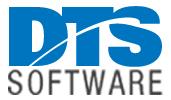But no application is perfect or complete when put into production. Traditionally, organizations have relied on exit routines, written and maintained by skilled assembler programmers, to tailor the operating environment to provide features and functions that match system processing to an installation’s unique needs. These exit routines may be called either explicitly or implicitly as part of application or system processing and may perform a vast range of essential functions. But as more mainframe professionals retire, organizations are unable to leverage exits to modify or manage app attributes as programmers with assembler skills have become increasingly hard to find.
Whitepaper Download: Exit Routines Made Simple for System Automation and Efficiency
Who’s Managing Assembler Code as these Experts Retire?
A 2018 report from Forrester Research indicates that almost a quarter (23%) of enterprise mainframe personnel retired from 2013 to 2018, and 63% of those vacated positions have yet to be filled. Yet, the speed of today’s application development continues to accelerate as enterprises worldwide continue to add Agile and DevOps methods to their processes. The ability to leverage z/OS’s exit routine utility is critical to keep up with app dev schedules in such environments.
However, great caution must be taken when using exit routines, especially those that run in supervisor state or system keys. An error introduced into an exit can bring the entire system’s nightly batch processing to a halt. Testing exit routines requires special care and internal system expertise. Once written, exit routines are rarely changed because of the difficulty of revising and maintaining the code. Programmers with assembler skills are critical to daily mainframe processing for customer-facing applications and yet the skills gap widens with every retiree.
Automation, the Opportunity to Adapt
With the shortage of mainframe assembler programming experts, organizations must adapt with better software and automation. DTS Software has created Easy-Exit, a product that eliminates the need for writing complex assembler exits and allows users to write exits within a simple policy rules engine. DTS’s policy rules engine provides all the flexibility available in assembler while avoiding the need to tediously revise, recompile, and retest for each change. Easy-Exit policy rules can perform tasks as varied as controlling FTP file transfers, managing WTO/WTOR content and destinations, suppressing SMF record types, and much more. Instead of hundreds of lines of difficult, undocumented, and sometimes obsolete code, organizations that use Easy-Exit can rely on the simple, yet powerful IF-THEN-ELSE statements of the DTS Policy Rules Language to provide critical functionality in a way that is clearly understandable to even your most junior staff.
As the mainframe skills gap continues to widen, embracing more user-friendly technology is one way to keep existing mainframe professionals on your payroll by creating more time to allocate to other burdensome tasks. More importantly, Easy-Exit allows organizations to take advantage of all the benefits that exit routines provide – superior functionality, detailed customization, and access to features otherwise unavailable – without the need for expensive, highly-skilled assembler programming expert. To learn more about DTS’s Easy-Exit, download our latest whitepaper, “Exit Routines for System Automation and Efficiency,” or visit our product website.


